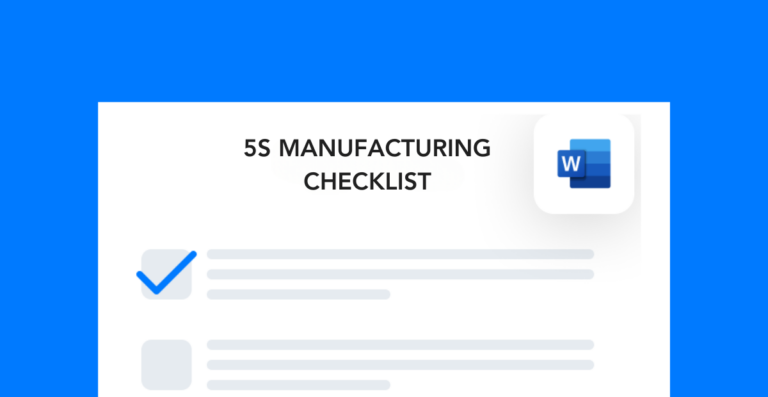Continuous improvement is critical to the success of any manufacturing company. To stay competitive, you have to be willing to adapt to new technologies and changing conditions—both internal and external. By conducting a manufacturing process review, you can find weaknesses in your operation and find new ways to address them.
Manufacturing process review basics
The purpose of reviewing manufacturing processes is to find improvement opportunities. It involves looking at all the variables within the process and evaluating their impact on the outcome. If you go through the entire review process and find zero issues, then you’re probably not looking hard enough. In my experience, there’s always something you can fix, replace, or change.
You should conduct a full process review every year to account for changes to things like:
- Industry or market conditions
- Company goals
- Product line
- Leadership
- Quality control measures
- Regulatory requirements
- Health and safety risks
Also, consider doing regular audits throughout the year to address specific concerns or areas of interest.
Benefits of doing a review
When done correctly, a manufacturing process review can have all sorts of benefits, including (but not limited to):
- Greater process efficiency
- Lower costs (both variable and overhead)
- Improved regulatory compliance
- Fewer quality defects
- More engaged and productive workforce
- Fewer health and safety risks
Another benefit of process reviews is that they encourage a proactive work environment. This is especially true if you involve multiple people in the review.
Tips for doing a review
There are no rules for doing a manufacturing process review. So, there are lots of different ways you can approach it. To get the most out of the process, tailor the steps and goals to your company’s needs.
Considering what you want from the review before you do it is the best way to ensure it’s effective and worth your time. Here are some tips you can follow to get started.
Establish the scope
Before you start, it’s very important to determine the scope of your process review. For example, are you going to look at the entire production process from start to finish? Or are you only going to look at one step within the process?
If your processes are highly complex, then I’d recommend breaking them down into smaller pieces. This will make it easier to dive deep and ensure you’re getting the most out of your review.
Know your regulatory requirements
One of the top reasons to do a review is to ensure regulatory compliance. So, going into it without having first reviewed your facility’s requirements is a big mistake.
If that’s too overwhelming to you, just focus on any changes you’ve implemented. For example, did you introduce a new piece of equipment or reconfigure the work area? Double check the regulations that might apply to those changes. That way, you can narrow down the scope of your review even further, making it that much more effective.
Use data as a guide
Another tip I have is to use data as your guide. For example, when you’re observing the process, actually record the manufacturing throughput time. Don’t just estimate where the bottleneck is—get a definitive answer. More than once, I’ve been very surprised to find an unexpected source of an issue.
You can collect data manually or install technology devices to do it for you. Some ideas of data points to collect include:
- Throughput time
- Kickout rate
- Defects per million opportunities (DPMO)
- Process startup time
- Rework rate
By evaluating each step of your production line individually, you can find bottlenecks, redundancies, or inefficiencies faster. And using data as a guide for your corrective actions is the best way to ensure an effective process improvement.
Consider the human factor
I’ve found that many leaders forget how big of a factor their workers play in the success or failure of a process. And not just because we’re all human and humans make mistakes. Rather, they forget how valuable worker feedback and input is for continuous improvement.
Your employees are the closest to the manufacturing process. They know which equipment acts up (and oftentimes why). They know how to time each step just right so they can be as efficient as possible. And they know what they’d change if somebody would just ask.
Conducting a manufacturing process review without consulting the workers is a major missed opportunity. If you involve your employees, you’ll also have the opportunity to boost engagement and improve morale.
Document everything
I’d also recommend documenting the review so that you can reference your findings and actions later on. Use action tracking software, a spreadsheet, or another documentation method to keep all your records organized and accessible. That way, you can compare reviews to look for patterns and even more insights.
Overall, a well-documented manufacturing process review can have a big impact on performance. By encouraging proactiveness, finding improvement opportunities, and boosting engagement, it has the potential to completely transform your facility’s performance for the better.
Other posts you might like…
No posts


